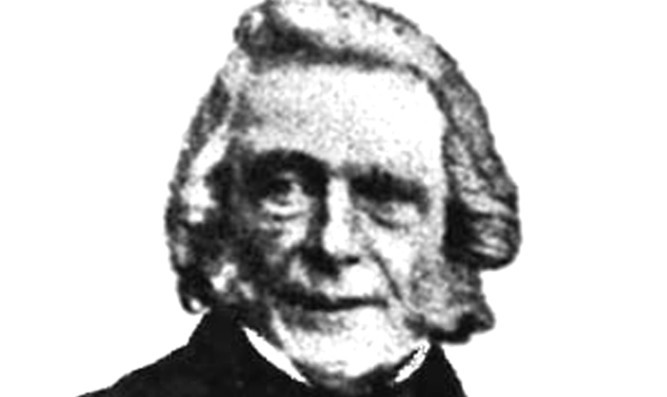An Edinburgh University scientist, who has spent years forensically researching the work of Charles Darwin, has rubbished claims that the Origin of Species author plagiarised a Perthshire farmer.
Julian Derry, who has published on Darwin under the name J.F. Derry, said the claims by Nottingham Trent University lecturer and leading criminologist Dr Mike Sutton were down to “very poor and lazy research offset by a big aggressive ego”.
In a lively lecture organised by the Carse of Gowrie Sustainability Group at the James Hutton Institute, Invergowrie, on Thursday night, Dr Sutton claimed that Darwin may have ‘borrowed’ the theory of natural selection from the relatively unknown Carse of Gowrie fruit farmer Patrick Matthew.
As revealed by The Courier, he challenged the orthodox view that Darwin was the first to discover the process of natural selection and that the Origin of Species, published in 1859, had been heavily influenced by Matthew’s book ‘On Naval Timber and Arboriculture’, published in 1831, which contains the complete hypothesis of the theory of natural selection.
He also claimed that Darwin, who always denied plagiarism, and his co-publisher Alfred Russel Wallace, must not only have been aware of Matthew’s work but borrowed from it heavily.
Sutton claimed Scotland had been denied a “science hero” and that a “great injustice” had been done.
But in an open letter sent to members of the Carse of Gowrie Sustainability Group yesterday, Mr Derry, who did not attend Thursday’s lecture, said that while Matthew was “clearly a great man of vision”, he did not influence the course of evolutionary history in the way that is claimed.
He said: “Darwin and Wallace did not plagiarise Matthew, and were not tipped off to his discovery of natural selection by their circle of friends and colleagues. Or rather, if any of this did occur, it has not been shown to have done so by the data presented by Dr Sutton.
“Why I say this, like this, carefully and cautiously, is because as a scientist, I must be confident beyond any reasonable doubt that the data and its interpretation do prove that these events happened as claimed. This is quite a different philosophy to the one underlying Dr Sutton’s research.
“I have never heard a scientist in any discipline use the kind of language that he does to criticise others and qualify his findings, for example, “100% certainty”. Every scientist I know worth their salt doesn’t even have the phrase in their vocabulary.”
Dr Sutton could not be contacted yesterday.
Fiona Ross, chairperson of Carse of Gowrie Sustainability Group said: “I will leave the ‘scientific battle of words’ with regards to Dr Sutton’s comprehensive “newly found data” to my eminent peers. However, what is a reality in our community is that most local people have just never heard of Matthew!
“A prolific farmer, botanist, anthropologist and campaigner for sustainable communities in the 19th Century. A man who created a 10,000 tree orchard, the largest on record here, in an area with a 800 year orchard heritage!
“Preston Watson, a man, who it is argued flew the first flight before the Wright Brothers, at Errol Airfield, at least has a road named after him.
“Matthew, a man who discovered ‘natural selection’ in plants 30 years before Darwin, had his grave in Errol graveyard covered over a few years later by the burial of local businessman.
“Our question is why has his legacy gone without respectful recognition? And how can we address that! The aim of this week’s collaboration with Dr Sutton, Matthew’s descendants and the Hutton Institute, was to promote Matthew’s legacy locally and nationally. At last night’s lecture, we asked the 60 attendees if they would support this work and the answer was a resounding Yes!’”
